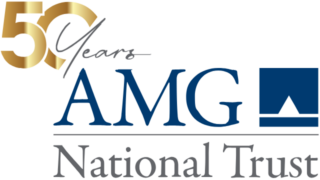Federal Reserve Attempts to Muzzle Inflation’s Vicious Bite
• 2 min read

Get the Latest Research & Insights
Sign up to receive an email summary of new articles posted to AMG Research & Insights.

The Federal Reserve (Fed) is moving to blunt the inflation spike Americans have experienced this quarter by cutting back its pandemic bond-buying program twice as fast as first planned six weeks ago.
Even with tapering sped up, monetary policy will remain accommodative of continuing economic growth. The Fed is walking a tight rope as it attempts to tame inflation and push the economy toward full recovery and full employment without increasing interest rates. Pulling back on its bond purchases is its first step.
The new pace effectively means the program will likely end in March, opening the door for interest-rate increases later in 2022 if inflation continues to chew away at the U.S. economy while the underlying demand remains robust. The core Consumer Price Index inflation rate last month hit 4.9%—the highest since 1991. The Fed wants to keep it around 2% in the medium term.
Launched 18 months ago at the pandemic’s height, the Fed’s massive bond-buying spree—about $120 billion a month, or more than $4 trillion to date—along with more than $3.5 trillion in government relief spending saved the economy from total collapse and later kindled a boom. Annualized GDP growth remained north of 6% during this year’s first two quarters. But that surge fizzled in the third quarter to 2% as COVID-19’s Delta variant swept the globe, dented consumer mobility and further disrupted supply chains.
On December 15, hawkish-sounding Fed officials signaled they were also ready to raise interest rates from near zero up to three times next year to hammer down the inflation threat. AMG expects 2022 to provide hardly any respite for policymakers as half of their objective—maximum employment—will remain difficult to estimate, with labor the force still buffeted by the pandemic.
After the economic boom earlier this year, output fell into a funk as the Delta variant hit hard in countries that feed the U.S. supply chain for both parts, like computer chips, and finished products like automobiles. However, there are signs that the U.S. economy is regaining momentum in the fourth quarter. In November, the unemployment rate was 4.2% and the labor participation rate was 61.8%—1.5 percentage points lower than before the pandemic first swept the country. Retail sales were also on the rise.
This information is for general information use only. It is not tailored to any specific situation, is not intended to be investment, tax, financial, legal, or other advice and should not be relied on as such. AMG’s opinions are subject to change without notice, and this report may not be updated to reflect changes in opinion. Forecasts, estimates, and certain other information contained herein are based on proprietary research and should not be considered investment advice or a recommendation to buy, sell or hold any particular security, strategy, or investment product.
Get the latest in Research & Insights
Sign up to receive a weekly email summary of new articles posted to AMG Research & Insights.



